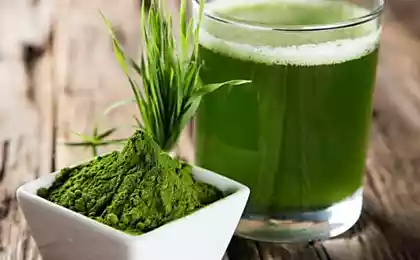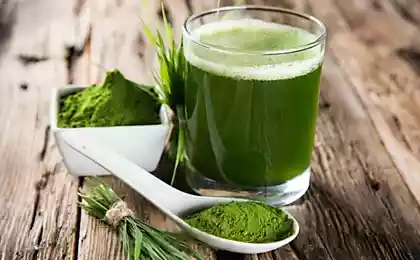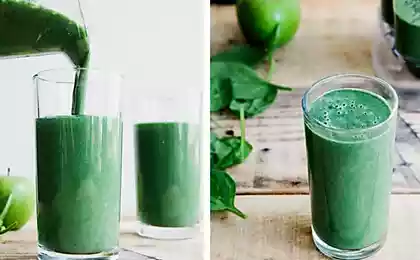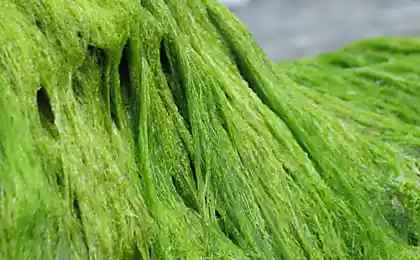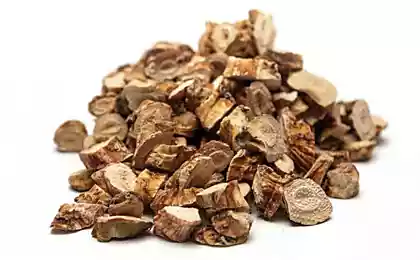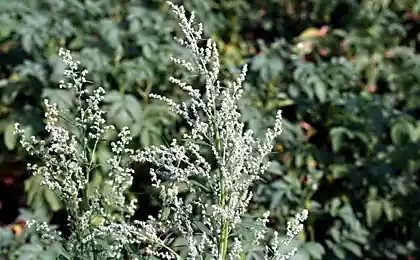1891
Discover the unique healing properties of Spirulina
Spirulina is a unique food product.Clinical data obtained in the leading medical scientific and medical institutions of the world showed that biologically active substances of natural microalgae Spirulina, acting in the complex, have high functional activity and exhibit a variety of properties.

It is established that Spirulina:
From history.
In 1964, the Belgian botanist J. Leonard discovered in the African forests near Lake Chad a tribe of aborigines, whose lives have not changed for the past few tens, and perhaps hundreds of thousands of years. These people did not hunt or farm.
Everything they needed, they found around them – forests abound with fruits, berries, roots and other food. They didn't know civilization.The attention of Leonard attracted one fact – these people lived to a very old age.(Average life expectancy in Africa is 35 years) and at the same time, practically did not get sick!
All the old men had healthy, well-preserved teeth and thick black hair.leonardI noticed the green cakes.which the savages ate as bread. They were made from biomass, which was collected on the surface of the lake and dried in the sun.
In the study, it turned out that thisIt consists of a filamentous blue-green algae (Spirulina Platensis) spirulina.. This algae has been known to science for a long time. It is 700 million years old and is one of the first photosynthetic life forms on Earth.
Earlier in 1521, Bernard Diasdel Castillo mentioned a product called teku-itlatl, which was a common dish among the Aztecs. These were the dried layers of Spirulina growing in the alkaline water of Lake Toxcoco near Mexico City. It is the increased alkalinity of water that is a favorable factor for the development of Spirulina. Only two lakes in the world meet these requirements: Toxcoco and Chad.
After the discovery of Leonard, scientists began to study the wonderful algae. In 1977-1980, G. Chammoro, the official expert in food toxicology UNIDO (Vienna) confirmed a negative toxicological result from the use of Spirulina. It was also found that spirulina protein is comparable to egg yolk protein, which is a sample of FAO, and the therapeutic properties of spirulina drugs exceeded all conceivable expectations of scientists.
Since the early 80s, spirulina began its triumphant march around the world as a food additive. Today, the daily diet of a Japanese or American is unthinkable without 3-5 grams of it. It is included in many finished products, and is also sold in its pure form, like powder or tablets.
In the Cosmonaut Training Center, this algae received a permanent residence permit. It is regularly accepted by athletes.Spirulina received such recognition that already in the early 80s Lomonosov Moscow State University received an order from the Ministry of Defense of the USSR (!) to develop methods for growing spirulina in artificial conditions and producing medical drugs on its basis.
Spirulina Platensis (Spirulina platensis)Multicellular spiral filamentous microalgae. Spirulina biomass is a set of blue-green strands consisting of cylindrical cells stacked in unbranched strands. The shape of the strands (spiral) is a generic feature of Spirulina, but the parameters of the helix vary between species. The step and length of the spiral may vary depending on the growth conditions. The diameter of cells is from 1 to 3 μm in small species and from 3 to 12 μm in large ones.
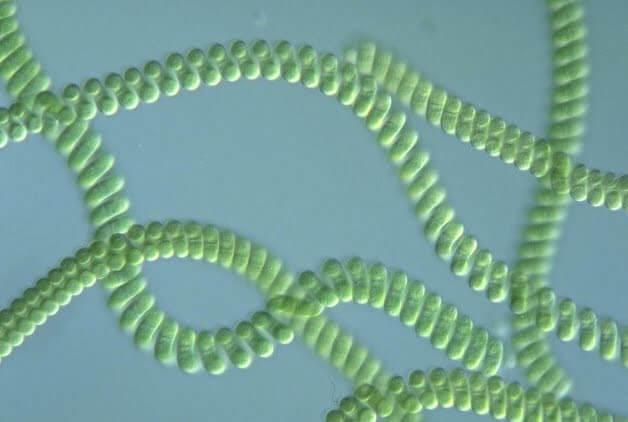
Spirulina is the only living organism that has lived on Earth unchanged for hundreds of millions of years due to its unique biochemical composition. This is a carefully balanced set of vitamins, minerals and amino acids, enclosed in an easily digestible mucoprotein membrane.
The protein content in spirulina reaches 70%, that is, in 10 grams of algae it is the same as in a kilogram of beef, and beta-carotene – as in 10 kilograms of dry carrots!
The composition of Spirulina is in large quantities blue pigment.phycocyanin-The only known substance that can stop the growth of cancer cells. Phycocyanin is not found in any other products.
Gamma-lano-linic acid is found only in Spirulina and in breast milk.. This substance is necessary for the prevention and treatment of arthritis. Glutamic acid reduces the need for alcohol, stabilizes mental abilities, is the main food for brain cells.
Tyrosine- "Elixir of youth" - slows down the aging of the body, prevents gray hair.cystine- ensures the work of the pancreas.Arginine- increases sexual activity, helps to cleanse the blood of toxins and toxins.inositol- maintains a healthy liver, promotes the elimination of carcinogens and excess female sex hormones, normalizes cholesterol levels.thiaminstrengthens the nervous system, reduces fatigue, normalizes sleep, heart rhythm, eliminates shortness of breath.Folic acid- necessary for the formation of hemoglobin.
In total, Spirulina includes about 2000 (!) vitamins, minerals, amino acids, including essential amino acids and enzymes.
Spirulina has unique properties, as proved by research conducted in leading medical, scientific and medical institutions of the world:
Spirulina treats not individual diseases, but the body as a whole. This is the main difference from all other medicines.Since each individual disease is not an independent process, but is a reaction of the body to serious physiological disorders of its work, for example, metabolism, conventional drugs suppress only these symptoms, without eliminating the cause of the disease.
As a result, these diseases become chronic and, in turn, provoke other concomitant diseases. Unlike them, Spirulina restores the disturbed functions of the body and forces it to fight diseases on its own.
As a powerful antioxidant, Spirulina prevents premature aging, which is primarily the result of oxidative processes in the body.With intensive reception of Spirulina, cases of restoration of early gray hair were noted, which until now was considered an irreversible process.
The unique properties of Spirulina as an immunostimulant allow the body to effectively resist any viral and bacterial infections.In addition, Spirulina restores the pancreas. Diabetic patients undergoing treatment with Spirulina note a sharp decrease in blood sugar levels. With constant intake of Spirulina, the therapeutic dose of insulin can be significantly reduced.
In the conditions of modern civilization, Spirulina’s ability to effectively remove toxins, toxins and radionuclides from the body is especially relevant.Residents of large cities and ecologically unfavorable areas, workers of chemical plants and nuclear power plants, miners and all other people living or working in harmful conditions, Spirulina should become a regular element of their daily diet.
179056
Biologists, physicists, doctors, nutritionists and other specialists from many countries, including America, Japan, Germany, Israel, the Netherlands, etc., for many years.They studied Spirulina and came to general and clear conclusions about its composition, the functions of active components and the mechanism of their action.
1. Spirulina is superior to any other healthy food in terms of protein content, which reaches 60-70%.Spirulina also has balanced combinations of vital elements such as carotene, gamma-lanolinic acid, polysaccharides, vitamin B12 and chlorophyll.
The effectiveness of these compositions is now beyond doubt and is especially important for strengthening the human immune system, its vital physiological functions, improving metabolism, preventing and treating certain diseases, etc. Currently, many people around the world, especially in developed countries, use both medical and food products and tonic drinks based on Spirulina.
These products are widely used as an aid in the treatment of diseases such as cancer, hypertension, gastritis and ulcers, liver disease, diabetes, anemia, etc.
2. Spirulina contains more complex iron than any other product.Complex iron can be easily absorbed by the human body. Spirulina contains 58 times more iron than raw spinach and 28 times more than raw beef liver.
3. The content of beta-carotene is also higher than in any other food.Beta-carotene determines how our cells interact with each other. Beta-carotene opens the membrane communication channels of cancer and precancerous cells, allowing them to receive immune signals to suspend or stop dividing.
That is why food rich in beta-carotene can not only have a preventive anti-cancer effect, but also inhibit the development of cancer cells. Anyone with cancer or at risk should take large doses of beta-carotene. Studies show that beta-carotene reduces cholesterol, heals wounds and reduces the size of tumors. Natural beta-carotene in many ways, both chemical and physical, is superior to the synthetic drug.
It is better absorbed and does not tend to accumulate with subsequent signs of intoxication of the body. Spirulina does not cause any toxic side effects, as is the case with some other blue-green algae.
4. Spirulina is the richest source of natural antioxidants.It contains almost all known antioxidants, including zinc, magnesium, selenium, and copper, amino acid methionine, vitamin E, vitamin B1 and B6, and beta-carotene. Spirulina is rich in chlorophyll, which it contains much more than wheat or alfalfa seedlings.
5. Spirulina is the only green natural product rich in vital fatty gamma-linolenic acid (GLA).Spirulina contains more GLA than any other food source. GLA reduces blood cholesterol and blood pressure, and also relieves premenstrual pain, eczema and other skin diseases. This acid makes the skin and hair of a person shiny, hardy and full of health. GLA also manifests itself as an anti-inflammatory agent and easing the symptoms of arthritis. Spirulina has been found to help treat arthritis.
6. Phycocyanin, which is the natural blue pigment of spirulina, has not been found in any other plant food source.Phycocyanin has now shown positive results in treating cancer in animals. It also has a stimulating effect on the immune system.
7. The glycolipids found in spirulina have found activity against the AIDS virus.
8. Spirulina is a rich natural source of phenylalanine weight loss drugs based on the effect of significant appetite suppression.The nutritional value of Spirulina provides a low-calorie diet without energy loss and health-destroying nutrient deficiencies, which affects most modern weight loss programs. Spirulina quenches hunger because it meets the body’s natural physical and biochemical needs.
9. Spirulina also acts as a functional food, nourishing beneficial intestinal flora., especially in such cultures as Lactobacillus and Rifidus. Maintaining the necessary levels of these bacteria in the gut reduces potential problems arising from opposing pathogenesis, such as E. coli and Candida albicans. Studies have shown that adding Spirulina to daily food increases the positive response of intestinal flora.
The nutritional value of Spirulina.
In summary, it can be said thatThe great nutritional value of spirulina is provided by:
• Protein of the highest quality.
High protein content – 70% (95% fully absorbed) compared to 20% protein content in meat products.
• An abundance of vital amino acids that the human body does not produce.
• Low calorie, low cholesterol, sugar and fat. Spirulina is ideal for a healthy diet and maintaining optimal weight.
Moderate taste spectrum that goes well with other foods. Comparison of the composition of spirulina with other foods showed that the difference lies in its unique vitamin and mineral composition:
• 25 times higher content of beta-carotene than carrots.
• 3 times higher content of vitamin E than in wheatgrass.
• The richest source of vitamin B-12, which is very important in terms of the use of spirulina by vegetarians.
• Rich in vitamin B, which helps fight stress.
• The iron content is 2-6 times higher than in beef liver, it also significantly exceeds the same values in spinach or steak.
• Rich content of natural minerals in a form that is easily absorbed by the human body.
• Spirulina is made from an environmentally friendly aquaculture.
• Spirulina is 100% natural and completely non-toxic.
Scientists in the United States, Japan, China, Russia, India and elsewhere are studying this remarkable food to unlock the mysteries of its enormous potential. Of course, further research is needed to prove Spirulina’s effectiveness against AIDS and other deadly diseases.
However, it is already clear that this safe, natural food provides enriched nutrient soil for optimal health and well-being. Spirulina is attracting increasing attention from physicians, nutrition agents and other professionals, not only as a valuable food, but also as a potential source of pharmaceuticals.
There are several substantiated scientific studies devoted to the ability of Spirulina to inhibit the reproduction of the virus, strengthen both cellular and general resources of the immune system, thereby leading to regression and inhibition of cancer. Although these studies are inconclusive and further, more detailed studies are needed, the results of the studies already conducted are very encouraging and deserve the closest attention.
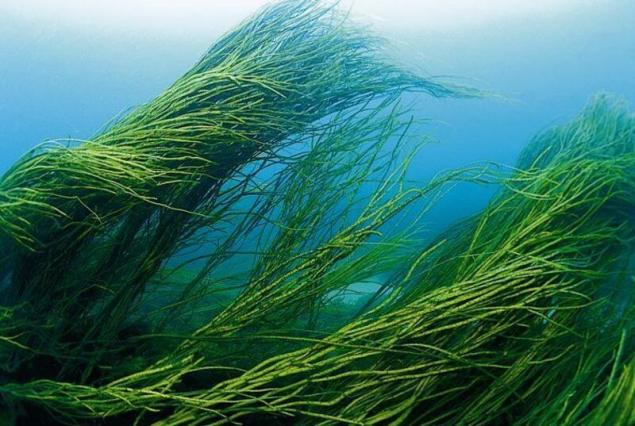
Scientific opinion.
As a quintessence of this extensive material, we will give the most unique, according to the researchers, therapeutic properties of Spirulina:
1.The pronounced effect of excretion from the body of toxins, salts of heavy metals, radionuclides.
2.Significant increase in the absorption of iron by the body and hemostimulating effect, which contributes to the normalization of serum iron levels and the elimination of ironDeficient anemia.
3.Expressed antioxidant and membrane-stabilizing effect.
4.Improving protein metabolism, increasing the initial low level of total protein, normalizing the ratio of albumins and globulins.
5.Normalization of vegetative homeostasis and functional activity of the cardiovascular system.
6.Normalization of pancreatic function both endocrine (a significant decrease in blood sugar in patients with diabetes) and exocrine (a significant improvement in food digestion - an increase in body weight in chronic colitis with malabsorption syndrome).
7.Hepatoprotective action (in chronic hepatitis, a decrease in the level of studied enzymes, bilirubin, thymol test).
8.Normalization of the function of the biliary system in dyskinesia of the biliary tract and chronic cholecystitis.
9.Normalization of metabolism and healing processes in the mucous membrane of the stomach and 12-pearl in patients with chronic erosive gastritis, peptic ulcer of the stomach and 12-pearl intestine and the disappearance of autumn-spring exacerbations against the background of prophylactic spirulina.
10.Normalization of bowel function in dysbacteriosis, intestinal form of food allergies, post-dysentery colitis, constipation with irigoscopic signs of hypertensive dyskinesia.
11.High anti-allergic effect. Including a decrease in hypersensitivity to toxins of tubercle bacillus, a decrease in the severity of manifestations of allergic skin damage in children and adults, up to its complete disappearance in children with allergic dermatitis, eczema, neurodermatitis; a decrease in the number and severity of attacks of bronchial asthma; a significant decrease in eosinophilia and an increase in external respiration "flow - volume" by 25-35% (in children taking basic therapy, these indicators practically do not change).
12.Normalization of the immune status in the form of an increase in the total number of T-lymphocytes, an increase in the differentiation of null cells, an improvement in energy metabolism and metabolic activity of leukocytes, a decrease in the deficit of reserve capabilities of enzyme microbicidal systems of macrophages, which clinically manifests itself in a decrease in the frequency, severity, duration of acute infectious morbidity by 2-3 times, especially in patients with initially low serum iron content. Positive effect on specific antidiphtheria immunity.
13.Accelerated wound healing, normalization of protein metabolism and exchange of electrolytes in burns of II and III degree, reducing the healing time of postoperative wounds and bone fractures.
14.The ability to restore hair growth in patients with nesting hair loss. Slowing down the process of graying hair, and in some cases, the complete restoration of natural hair color in the elderly.
15.Sedative effect, increased efficiency, improved memory function, increased differentiation of light signals, the speed of the oculomotor reflex, reduced fatigue and neuroreflex excitability.
16.The ability to slow the development of various types of cancer and tumors due to the high content of spirulina beta-carotene, one of the well-known anti-cancer substances and the most effective substance that binds free radicals that destroy cells. Detoxification of the body, increasing the level of iron in the blood, increasing the immune defense and energy capabilities of the body, reducing the negative effects of chemotherapy in cancer (data from the US National Cancer Institute).
17.Reducing the adaptation period and accelerating the normalization of the functional activity of the body in persons who have experienced stress, working in extreme conditions of prolonged isolation (sea and space expeditions).
Thus, spirulina should be considered an effective biogenic hepatoprotective agent, in activity not inferior to other known drugs (carsil, essential). Unlike the latter, the drug has a stimulating effect on hematopoiesis, which also makes it expedient to use it as an anti-anemic agent.
Particular attention should be paid to the ability of the drug to cause changes in lipid metabolism during the first 10-14 days of treatment, since these changes can have a certain value both in liver diseases that occur with the phenomena of cholestasis, and in some other diseases associated with lipid metabolism disorders, in particular, in atherosclerosis.
Spirulina composition.
Spirulina, surpasses many foods, both plant and animal origin in the content of vitamins and trace elements. In terms of vitamin A, spirulina surpasses butter and cheese 400 times, eggs 1,500 times, cottage cheese and cucumbers 2,500 times, milk 10,000 times.
Vitamins of group B (B1 B2, B3, B5, B6, B9, B12) are contained in spirulina in an amount 40-150 times greater than in milk, cheese, cottage cheese, meat, fish, eggs, butter.
Just 1 gram of spirulina vitamin B12 in digestible form contains more than 100 grams of beef of the highest category, and 300 times more than pork. 1 gram of Spirulina in the content of vitamin B12 is equivalent to 1 liter of fresh steamed milk.
Spirulina contains vitamins E (tocopherol), C, minerals and trace elements: potassium, calcium, magnesium, zinc, manganese, phosphorus, iron, microdoses of iodine, selenium, rare metals, which is very important for the body.
Spirulina contains such valuable compounds for human health as phycocyanin, which stimulates the immune system. Gamma-linolenic acid is found in addition to spirulina only in breast milk. Chlorophyll is included in spirulina cells in an easily digestible form, it contributes to the restoration of liver cells and has an antitumor effect.
Spirulina contains a complete set of all essential amino acids: isoleucine, leucine, lysine, methionine, phenylalanine, threonine, tryptophan, valine, alanine, arginine, cystine, histidine, tyrosine, glutamic acid, as well as more than 2000 enzymes in microdoses.
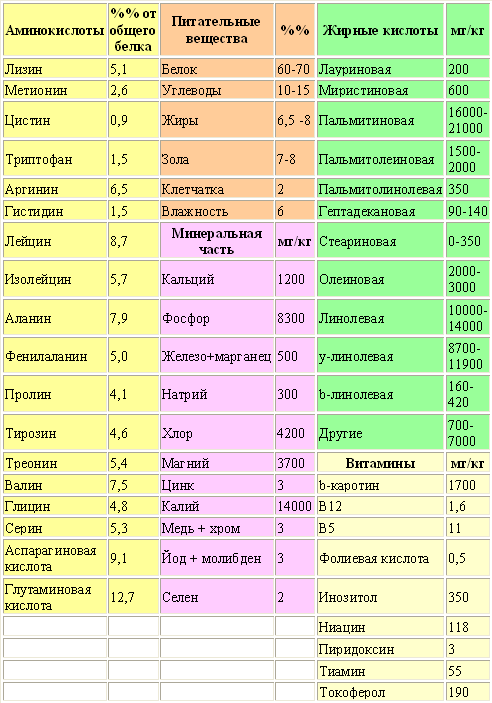
Method of use:
We recommend 1-3 teaspoons of spirulina powder dissolved in warm water or juice and consumed 40 minutes before meals. Together with taking spirulina, we recommend increasing the amount of water taken at the rate of 0.2 liters per teaspoon of the product during the day. Joint use with chlorella enhances the effect of each of the products. the recommended portion in the daily diet of an adult 3-15 g.
P.S. And remember, just changing our consumption – together we change the world!
Join us on Facebook, VKontakte, Odnoklassniki
Source: armoniainterna.ru/? portfolio=project-3_5

It is established that Spirulina:
- is a source of vitamins, essential amino acids, polyunsaturated fatty acids, antioxidants, macro- and microelements;
- contains the most important vitamins and trace elements in organic form, which significantly facilitates their absorption in the human gastrointestinal tract and allows you to recommend a product for the prevention of microelements deficiency and, above all, iron deficiency states;
- normalizes and activates metabolism;
- improves the digestibility of vitamins and microelements of food;
- contributes to the normalization of the composition (increases the number of lactic acid bacteria) and the functional activity of the intestinal microflora;
- reduces excess blood sugar, reduces the need for sugar-lowering drugs and insulin in patients with diabetes;
- in baby food contributes to a more complete assimilation of food, reduces the risks of gastrointestinal diseases, improves the immune system, significantly reduces the incidence of acute respiratory infections, facilitates the adaptation of children to the conditions of preschool institutions;
- increases the nonspecific resistance of the body to the action of adverse environmental factors;
- binds and removes from the body xenobiotics;
- stimulates the activity of the hematopoietic system;
- It destroys putrefactive bacteria and helps to regenerate the microflora that produces vitamins in the gastrointestinal tract, including vitamin B12.
From history.
In 1964, the Belgian botanist J. Leonard discovered in the African forests near Lake Chad a tribe of aborigines, whose lives have not changed for the past few tens, and perhaps hundreds of thousands of years. These people did not hunt or farm.
Everything they needed, they found around them – forests abound with fruits, berries, roots and other food. They didn't know civilization.The attention of Leonard attracted one fact – these people lived to a very old age.(Average life expectancy in Africa is 35 years) and at the same time, practically did not get sick!
All the old men had healthy, well-preserved teeth and thick black hair.leonardI noticed the green cakes.which the savages ate as bread. They were made from biomass, which was collected on the surface of the lake and dried in the sun.
In the study, it turned out that thisIt consists of a filamentous blue-green algae (Spirulina Platensis) spirulina.. This algae has been known to science for a long time. It is 700 million years old and is one of the first photosynthetic life forms on Earth.
Earlier in 1521, Bernard Diasdel Castillo mentioned a product called teku-itlatl, which was a common dish among the Aztecs. These were the dried layers of Spirulina growing in the alkaline water of Lake Toxcoco near Mexico City. It is the increased alkalinity of water that is a favorable factor for the development of Spirulina. Only two lakes in the world meet these requirements: Toxcoco and Chad.
After the discovery of Leonard, scientists began to study the wonderful algae. In 1977-1980, G. Chammoro, the official expert in food toxicology UNIDO (Vienna) confirmed a negative toxicological result from the use of Spirulina. It was also found that spirulina protein is comparable to egg yolk protein, which is a sample of FAO, and the therapeutic properties of spirulina drugs exceeded all conceivable expectations of scientists.
Since the early 80s, spirulina began its triumphant march around the world as a food additive. Today, the daily diet of a Japanese or American is unthinkable without 3-5 grams of it. It is included in many finished products, and is also sold in its pure form, like powder or tablets.
In the Cosmonaut Training Center, this algae received a permanent residence permit. It is regularly accepted by athletes.Spirulina received such recognition that already in the early 80s Lomonosov Moscow State University received an order from the Ministry of Defense of the USSR (!) to develop methods for growing spirulina in artificial conditions and producing medical drugs on its basis.
Spirulina Platensis (Spirulina platensis)Multicellular spiral filamentous microalgae. Spirulina biomass is a set of blue-green strands consisting of cylindrical cells stacked in unbranched strands. The shape of the strands (spiral) is a generic feature of Spirulina, but the parameters of the helix vary between species. The step and length of the spiral may vary depending on the growth conditions. The diameter of cells is from 1 to 3 μm in small species and from 3 to 12 μm in large ones.

Spirulina is the only living organism that has lived on Earth unchanged for hundreds of millions of years due to its unique biochemical composition. This is a carefully balanced set of vitamins, minerals and amino acids, enclosed in an easily digestible mucoprotein membrane.
The protein content in spirulina reaches 70%, that is, in 10 grams of algae it is the same as in a kilogram of beef, and beta-carotene – as in 10 kilograms of dry carrots!
The composition of Spirulina is in large quantities blue pigment.phycocyanin-The only known substance that can stop the growth of cancer cells. Phycocyanin is not found in any other products.
Gamma-lano-linic acid is found only in Spirulina and in breast milk.. This substance is necessary for the prevention and treatment of arthritis. Glutamic acid reduces the need for alcohol, stabilizes mental abilities, is the main food for brain cells.
Tyrosine- "Elixir of youth" - slows down the aging of the body, prevents gray hair.cystine- ensures the work of the pancreas.Arginine- increases sexual activity, helps to cleanse the blood of toxins and toxins.inositol- maintains a healthy liver, promotes the elimination of carcinogens and excess female sex hormones, normalizes cholesterol levels.thiaminstrengthens the nervous system, reduces fatigue, normalizes sleep, heart rhythm, eliminates shortness of breath.Folic acid- necessary for the formation of hemoglobin.
In total, Spirulina includes about 2000 (!) vitamins, minerals, amino acids, including essential amino acids and enzymes.
Spirulina has unique properties, as proved by research conducted in leading medical, scientific and medical institutions of the world:
- significant suppression of all influenza serotypes;
- compensation for vitamin and mineral deficiency;
- normalization of the blood formula; reduces the level of fat in the blood, serves as a prophylactic agent for atherosclerosis and coronary diseases;
- acceleration of scarring of wounds and healing of burns;
- cellular and organismal rejuvenation;
- ensuring resistance to radioactive radiation;
- normalizes metabolism, helps restore the immune status, prevents the accumulation of excess weight;
- helps in the treatment of vascular diseases, ulcers, inflammation of the joints, osteochondrosis, hypertension, weakness, insomnia, hemorrhoids;
- in Asian countries is known as an effective means of combating certain types of cancer, immunodeficiency, allergies;
- removes heavy metals, toxins, radionuclides from the body, prevents a decrease in the level of leukocytes during x-ray therapy;
- in obstetrics and gynecology allows to reduce the number of diseases with abnormal course of pregnancy and the postpartum period, helps to increase lactation;
- is a "cleaner" of the body, especially for the population of environmentally polluted areas;
- powerful therapeutic and prophylactic agent for healthy people, increases efficiency, develops immunity and resistance to diseases.
Spirulina treats not individual diseases, but the body as a whole. This is the main difference from all other medicines.Since each individual disease is not an independent process, but is a reaction of the body to serious physiological disorders of its work, for example, metabolism, conventional drugs suppress only these symptoms, without eliminating the cause of the disease.
As a result, these diseases become chronic and, in turn, provoke other concomitant diseases. Unlike them, Spirulina restores the disturbed functions of the body and forces it to fight diseases on its own.
As a powerful antioxidant, Spirulina prevents premature aging, which is primarily the result of oxidative processes in the body.With intensive reception of Spirulina, cases of restoration of early gray hair were noted, which until now was considered an irreversible process.
The unique properties of Spirulina as an immunostimulant allow the body to effectively resist any viral and bacterial infections.In addition, Spirulina restores the pancreas. Diabetic patients undergoing treatment with Spirulina note a sharp decrease in blood sugar levels. With constant intake of Spirulina, the therapeutic dose of insulin can be significantly reduced.
In the conditions of modern civilization, Spirulina’s ability to effectively remove toxins, toxins and radionuclides from the body is especially relevant.Residents of large cities and ecologically unfavorable areas, workers of chemical plants and nuclear power plants, miners and all other people living or working in harmful conditions, Spirulina should become a regular element of their daily diet.
179056
Biologists, physicists, doctors, nutritionists and other specialists from many countries, including America, Japan, Germany, Israel, the Netherlands, etc., for many years.They studied Spirulina and came to general and clear conclusions about its composition, the functions of active components and the mechanism of their action.
1. Spirulina is superior to any other healthy food in terms of protein content, which reaches 60-70%.Spirulina also has balanced combinations of vital elements such as carotene, gamma-lanolinic acid, polysaccharides, vitamin B12 and chlorophyll.
The effectiveness of these compositions is now beyond doubt and is especially important for strengthening the human immune system, its vital physiological functions, improving metabolism, preventing and treating certain diseases, etc. Currently, many people around the world, especially in developed countries, use both medical and food products and tonic drinks based on Spirulina.
These products are widely used as an aid in the treatment of diseases such as cancer, hypertension, gastritis and ulcers, liver disease, diabetes, anemia, etc.
2. Spirulina contains more complex iron than any other product.Complex iron can be easily absorbed by the human body. Spirulina contains 58 times more iron than raw spinach and 28 times more than raw beef liver.
3. The content of beta-carotene is also higher than in any other food.Beta-carotene determines how our cells interact with each other. Beta-carotene opens the membrane communication channels of cancer and precancerous cells, allowing them to receive immune signals to suspend or stop dividing.
That is why food rich in beta-carotene can not only have a preventive anti-cancer effect, but also inhibit the development of cancer cells. Anyone with cancer or at risk should take large doses of beta-carotene. Studies show that beta-carotene reduces cholesterol, heals wounds and reduces the size of tumors. Natural beta-carotene in many ways, both chemical and physical, is superior to the synthetic drug.
It is better absorbed and does not tend to accumulate with subsequent signs of intoxication of the body. Spirulina does not cause any toxic side effects, as is the case with some other blue-green algae.
4. Spirulina is the richest source of natural antioxidants.It contains almost all known antioxidants, including zinc, magnesium, selenium, and copper, amino acid methionine, vitamin E, vitamin B1 and B6, and beta-carotene. Spirulina is rich in chlorophyll, which it contains much more than wheat or alfalfa seedlings.
5. Spirulina is the only green natural product rich in vital fatty gamma-linolenic acid (GLA).Spirulina contains more GLA than any other food source. GLA reduces blood cholesterol and blood pressure, and also relieves premenstrual pain, eczema and other skin diseases. This acid makes the skin and hair of a person shiny, hardy and full of health. GLA also manifests itself as an anti-inflammatory agent and easing the symptoms of arthritis. Spirulina has been found to help treat arthritis.
6. Phycocyanin, which is the natural blue pigment of spirulina, has not been found in any other plant food source.Phycocyanin has now shown positive results in treating cancer in animals. It also has a stimulating effect on the immune system.
7. The glycolipids found in spirulina have found activity against the AIDS virus.
8. Spirulina is a rich natural source of phenylalanine weight loss drugs based on the effect of significant appetite suppression.The nutritional value of Spirulina provides a low-calorie diet without energy loss and health-destroying nutrient deficiencies, which affects most modern weight loss programs. Spirulina quenches hunger because it meets the body’s natural physical and biochemical needs.
9. Spirulina also acts as a functional food, nourishing beneficial intestinal flora., especially in such cultures as Lactobacillus and Rifidus. Maintaining the necessary levels of these bacteria in the gut reduces potential problems arising from opposing pathogenesis, such as E. coli and Candida albicans. Studies have shown that adding Spirulina to daily food increases the positive response of intestinal flora.
The nutritional value of Spirulina.
In summary, it can be said thatThe great nutritional value of spirulina is provided by:
• Protein of the highest quality.
High protein content – 70% (95% fully absorbed) compared to 20% protein content in meat products.
• An abundance of vital amino acids that the human body does not produce.
• Low calorie, low cholesterol, sugar and fat. Spirulina is ideal for a healthy diet and maintaining optimal weight.
Moderate taste spectrum that goes well with other foods. Comparison of the composition of spirulina with other foods showed that the difference lies in its unique vitamin and mineral composition:
• 25 times higher content of beta-carotene than carrots.
• 3 times higher content of vitamin E than in wheatgrass.
• The richest source of vitamin B-12, which is very important in terms of the use of spirulina by vegetarians.
• Rich in vitamin B, which helps fight stress.
• The iron content is 2-6 times higher than in beef liver, it also significantly exceeds the same values in spinach or steak.
• Rich content of natural minerals in a form that is easily absorbed by the human body.
• Spirulina is made from an environmentally friendly aquaculture.
• Spirulina is 100% natural and completely non-toxic.
Scientists in the United States, Japan, China, Russia, India and elsewhere are studying this remarkable food to unlock the mysteries of its enormous potential. Of course, further research is needed to prove Spirulina’s effectiveness against AIDS and other deadly diseases.
However, it is already clear that this safe, natural food provides enriched nutrient soil for optimal health and well-being. Spirulina is attracting increasing attention from physicians, nutrition agents and other professionals, not only as a valuable food, but also as a potential source of pharmaceuticals.
There are several substantiated scientific studies devoted to the ability of Spirulina to inhibit the reproduction of the virus, strengthen both cellular and general resources of the immune system, thereby leading to regression and inhibition of cancer. Although these studies are inconclusive and further, more detailed studies are needed, the results of the studies already conducted are very encouraging and deserve the closest attention.

Scientific opinion.
As a quintessence of this extensive material, we will give the most unique, according to the researchers, therapeutic properties of Spirulina:
1.The pronounced effect of excretion from the body of toxins, salts of heavy metals, radionuclides.
2.Significant increase in the absorption of iron by the body and hemostimulating effect, which contributes to the normalization of serum iron levels and the elimination of ironDeficient anemia.
3.Expressed antioxidant and membrane-stabilizing effect.
4.Improving protein metabolism, increasing the initial low level of total protein, normalizing the ratio of albumins and globulins.
5.Normalization of vegetative homeostasis and functional activity of the cardiovascular system.
6.Normalization of pancreatic function both endocrine (a significant decrease in blood sugar in patients with diabetes) and exocrine (a significant improvement in food digestion - an increase in body weight in chronic colitis with malabsorption syndrome).
7.Hepatoprotective action (in chronic hepatitis, a decrease in the level of studied enzymes, bilirubin, thymol test).
8.Normalization of the function of the biliary system in dyskinesia of the biliary tract and chronic cholecystitis.
9.Normalization of metabolism and healing processes in the mucous membrane of the stomach and 12-pearl in patients with chronic erosive gastritis, peptic ulcer of the stomach and 12-pearl intestine and the disappearance of autumn-spring exacerbations against the background of prophylactic spirulina.
10.Normalization of bowel function in dysbacteriosis, intestinal form of food allergies, post-dysentery colitis, constipation with irigoscopic signs of hypertensive dyskinesia.
11.High anti-allergic effect. Including a decrease in hypersensitivity to toxins of tubercle bacillus, a decrease in the severity of manifestations of allergic skin damage in children and adults, up to its complete disappearance in children with allergic dermatitis, eczema, neurodermatitis; a decrease in the number and severity of attacks of bronchial asthma; a significant decrease in eosinophilia and an increase in external respiration "flow - volume" by 25-35% (in children taking basic therapy, these indicators practically do not change).
12.Normalization of the immune status in the form of an increase in the total number of T-lymphocytes, an increase in the differentiation of null cells, an improvement in energy metabolism and metabolic activity of leukocytes, a decrease in the deficit of reserve capabilities of enzyme microbicidal systems of macrophages, which clinically manifests itself in a decrease in the frequency, severity, duration of acute infectious morbidity by 2-3 times, especially in patients with initially low serum iron content. Positive effect on specific antidiphtheria immunity.
13.Accelerated wound healing, normalization of protein metabolism and exchange of electrolytes in burns of II and III degree, reducing the healing time of postoperative wounds and bone fractures.
14.The ability to restore hair growth in patients with nesting hair loss. Slowing down the process of graying hair, and in some cases, the complete restoration of natural hair color in the elderly.
15.Sedative effect, increased efficiency, improved memory function, increased differentiation of light signals, the speed of the oculomotor reflex, reduced fatigue and neuroreflex excitability.
16.The ability to slow the development of various types of cancer and tumors due to the high content of spirulina beta-carotene, one of the well-known anti-cancer substances and the most effective substance that binds free radicals that destroy cells. Detoxification of the body, increasing the level of iron in the blood, increasing the immune defense and energy capabilities of the body, reducing the negative effects of chemotherapy in cancer (data from the US National Cancer Institute).
17.Reducing the adaptation period and accelerating the normalization of the functional activity of the body in persons who have experienced stress, working in extreme conditions of prolonged isolation (sea and space expeditions).
Thus, spirulina should be considered an effective biogenic hepatoprotective agent, in activity not inferior to other known drugs (carsil, essential). Unlike the latter, the drug has a stimulating effect on hematopoiesis, which also makes it expedient to use it as an anti-anemic agent.
Particular attention should be paid to the ability of the drug to cause changes in lipid metabolism during the first 10-14 days of treatment, since these changes can have a certain value both in liver diseases that occur with the phenomena of cholestasis, and in some other diseases associated with lipid metabolism disorders, in particular, in atherosclerosis.
Spirulina composition.
Spirulina, surpasses many foods, both plant and animal origin in the content of vitamins and trace elements. In terms of vitamin A, spirulina surpasses butter and cheese 400 times, eggs 1,500 times, cottage cheese and cucumbers 2,500 times, milk 10,000 times.
Vitamins of group B (B1 B2, B3, B5, B6, B9, B12) are contained in spirulina in an amount 40-150 times greater than in milk, cheese, cottage cheese, meat, fish, eggs, butter.
Just 1 gram of spirulina vitamin B12 in digestible form contains more than 100 grams of beef of the highest category, and 300 times more than pork. 1 gram of Spirulina in the content of vitamin B12 is equivalent to 1 liter of fresh steamed milk.
Spirulina contains vitamins E (tocopherol), C, minerals and trace elements: potassium, calcium, magnesium, zinc, manganese, phosphorus, iron, microdoses of iodine, selenium, rare metals, which is very important for the body.
Spirulina contains such valuable compounds for human health as phycocyanin, which stimulates the immune system. Gamma-linolenic acid is found in addition to spirulina only in breast milk. Chlorophyll is included in spirulina cells in an easily digestible form, it contributes to the restoration of liver cells and has an antitumor effect.
Spirulina contains a complete set of all essential amino acids: isoleucine, leucine, lysine, methionine, phenylalanine, threonine, tryptophan, valine, alanine, arginine, cystine, histidine, tyrosine, glutamic acid, as well as more than 2000 enzymes in microdoses.

Method of use:
We recommend 1-3 teaspoons of spirulina powder dissolved in warm water or juice and consumed 40 minutes before meals. Together with taking spirulina, we recommend increasing the amount of water taken at the rate of 0.2 liters per teaspoon of the product during the day. Joint use with chlorella enhances the effect of each of the products. the recommended portion in the daily diet of an adult 3-15 g.
P.S. And remember, just changing our consumption – together we change the world!
Join us on Facebook, VKontakte, Odnoklassniki
Source: armoniainterna.ru/? portfolio=project-3_5
